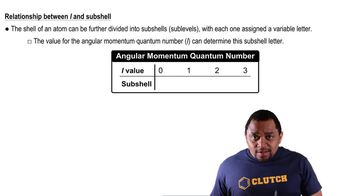Here are the essential concepts you must grasp in order to answer the question correctly.
Effective Nuclear Charge (Z_eff)
Effective nuclear charge (Z_eff) is the net positive charge experienced by an electron in a multi-electron atom. It accounts for the actual nuclear charge (the number of protons) minus the shielding effect of other electrons. This concept is crucial for understanding how electrons are held in an atom and why different types of electrons (like 3s and 3p) experience different levels of attraction to the nucleus.
Recommended video:
Electron Shielding
Electron shielding occurs when inner-shell electrons repel outer-shell electrons, reducing the effective nuclear charge felt by those outer electrons. This phenomenon explains why electrons in different subshells (like 3s and 3p) can experience different effective nuclear charges, as the spatial distribution and energy levels of these electrons influence how much they are shielded from the nucleus.
Recommended video:
Subshell Energy Levels
Subshell energy levels refer to the different energy states of electrons within an atom, categorized into s, p, d, and f orbitals. The 3s and 3p subshells have different shapes and orientations, leading to variations in their energy and the extent to which they are shielded by other electrons. This difference in energy levels contributes to the distinct effective nuclear charges experienced by 3s and 3p electrons.
Recommended video:
Angular Momentum Quantum Number and Subshell





